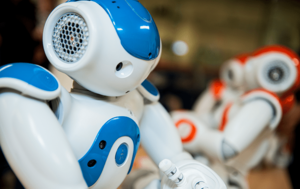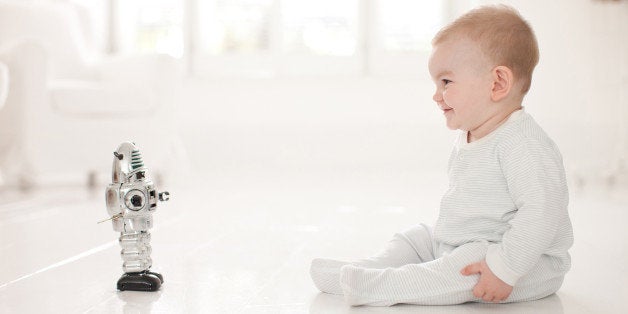 Whilst caring for children seems a very human endeavor, there have nonetheless been a number of projects recently that have seen robots built for just such a task.
Whilst caring for children seems a very human endeavor, there have nonetheless been a number of projects recently that have seen robots built for just such a task.
For instance, MIT's Huggable is a teddy bear robot that aims to provide support and comfort to children with chronic illnesses, all the while reporting on various vital signs to their doctors.
The University of Delaware meanwhile developed a robot, called NAO, which is capable of reading the mood of the child, recognizing their family and even understanding your preferences for food, music and so on.
Teaching robots
Of course, such things aren't reserved just to custodial tasks, with a Harvard team developing a robot, called Root, that is designed to help its young charges learn how to code.
The latest project along these lines is from the Tilburg Center for Cognition and Communication (TCC), who have developed a robot that is designed to help young people learn a new language.
The robot is believed to be the first of its kind anywhere in the world, and is designed to support the children in their development of English or Dutch skills.
The team believe that strong language skills are increasingly crucial in our globalized world, especially with people increasingly living in countries where the official language is not their native-tongue. For instance, many immigrant children may speak their native language at home, but need to learn the language of their host children before they start school.
Doing this will have a big impact on how successful they prove to be at school, and subsequently their chances of integrating successfully into their host society.
Picking it up at an early age
Linguists believe that children are particularly susceptible to new languages from an early age, hence why the team specifically developed their robot to target pre-school children. They worked with the Servicebureau Kinderopvang in Tilberg to partner with five pre-schools in the area.
The first experiment using the device was completed this summer, with the researchers hoping to use the findings from it to further enhance the way the robot communicates with the youngsters. The results from this experiment are due to be published in August.
Have a look at the video below to see the device in action. Could you see a robot helping to teach your child a new language?
https://www.youtube.com/watch?v=vlmjvKgWtmU
Support HuffPost
Our 2024 Coverage Needs You
Your Loyalty Means The World To Us
At HuffPost, we believe that everyone needs high-quality journalism, but we understand that not everyone can afford to pay for expensive news subscriptions. That is why we are committed to providing deeply reported, carefully fact-checked news that is freely accessible to everyone.
Whether you come to HuffPost for updates on the 2024 presidential race, hard-hitting investigations into critical issues facing our country today, or trending stories that make you laugh, we appreciate you. The truth is, news costs money to produce, and we are proud that we have never put our stories behind an expensive paywall.
Would you join us to help keep our stories free for all? Your contribution of as little as $2 will go a long way.
Can't afford to donate? Support HuffPost by creating a free account and log in while you read.
As Americans head to the polls in 2024, the very future of our country is at stake. At HuffPost, we believe that a free press is critical to creating well-informed voters. That's why our journalism is free for everyone, even though other newsrooms retreat behind expensive paywalls.
Our journalists will continue to cover the twists and turns during this historic presidential election. With your help, we'll bring you hard-hitting investigations, well-researched analysis and timely takes you can't find elsewhere. Reporting in this current political climate is a responsibility we do not take lightly, and we thank you for your support.
Contribute as little as $2 to keep our news free for all.
Can't afford to donate? Support HuffPost by creating a free account and log in while you read.
Dear HuffPost Reader
Thank you for your past contribution to HuffPost. We are sincerely grateful for readers like you who help us ensure that we can keep our journalism free for everyone.
The stakes are high this year, and our 2024 coverage could use continued support. Would you consider becoming a regular HuffPost contributor?
Dear HuffPost Reader
Thank you for your past contribution to HuffPost. We are sincerely grateful for readers like you who help us ensure that we can keep our journalism free for everyone.
The stakes are high this year, and our 2024 coverage could use continued support. If circumstances have changed since you last contributed, we hope you’ll consider contributing to HuffPost once more.
Already contributed? Log in to hide these messages.

 Whilst caring for children seems a very human endeavor, there have nonetheless been a number of projects recently that have seen robots built for just such a task.
Whilst caring for children seems a very human endeavor, there have nonetheless been a number of projects recently that have seen robots built for just such a task.